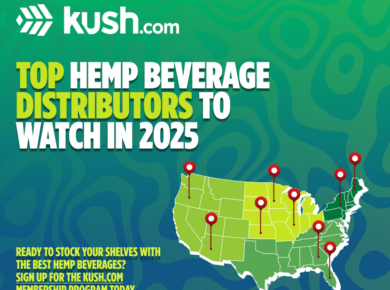What are Liquid Nutrients?
Liquid nutrients are an effective way to optimize the health of your soil and the health of your plants at each unique phase of the growing cycle.

Plants use different minerals at different points in their life cycle. For example, during the first few weeks of vegetative growth cannabis uses more nitrogen. Then, once flowering begins, plants will shift to using more phosphorus to promote flowering.
Deciphering the Labels: What Does it All Mean?
What is NPK?
Containers of liquid fertilizer will have a label that show “NPK” followed by a numbered ratio rating. This indicates how much of an available nutrient are in each serving of a given container. NPK stands for Nitrogen, Phosphorus, Potassium.
Nitrogen: Nitrogen is used by most plants during early life to promote healthy and rapid growth.
Phosphorus: Phosphorus is used to promote root, flower, or fruit growth in most plants. In this case it will lead to healthier, denser bud flowers.
Potassium: Potassium insures that internal systems (photosynthesis, energy storage, growth patterns, etc) in the plant are maintained and continue to operate effectively and efficiently.
Numbers and Ratios
Liquid Nutrient container comes with wide array of number on the label. 1-1-1, 9-8-4, 3-3-3, 16-4-8, and so on. But what do these number mean?
The number’s location represents what nutrient it is.
Example: NPK9-4-5, means Nitrogen=9, Phosphorus=4, Potassium=5
The number’s value is based on the percentage of a nutrient that makes up each serving.
To know how much to use on your crop be sure to follow the instructions given on each container of fertilizer. This will assure you get the best results from using the product.
Recommended Ratios
When to Use: Vegetative Phase
Within the first weeks of growth (0-5 weeks) cannabis does best in a high nitrogen, low phosphorus, medium potassium or NPK 9-4-5.
When to Use: Flowering Phase
Once pre flowering signs are noticed (4-6 weeks from a seed) the mix can move to a low nitrogen, high phosphorus, and high/moderate.
One Size Fits All
There is no one size fits all solution to growing cannabis. Each plant has it’s own unique biological organism and will react differently based on it’s genes, soil, stress, water, and light conditions. So these suggestions are a guide or general map, and should be adjusted if the need occurs.
The more experienced you become as a grower the easier it will be to read the plants and see, based on observation and experience, what they need.
Complete and Incomplete Fertilizers
What are Complete Fertilizers?
Complete fertilizers are any fertilizer that have three macro nutrients such as NPK. These three nutrients are tailored to each stage of growth, and have been selected because they have the biggest impact on growth cycles.
What are Incomplete Fertilizers?
Incomplete fertilizers are less than three nutrients per serving. For example, if your soil has an abundance of nitrogen by nature, placing more nitrogen from a fertilizer is not necessary (or recommended). In that case an incomplete fertilizer would be a good choice. This would allow the plant to receive the nutrients it needs without the dangers of overload and nutrient lockout.
[PRO TIP] Nutrient lockout is simply the defensive response a plant has to an overload of a particular nutrient. It will shut down absorption of this nutrient to protect itself from burns in an attempt to remain balanced. However, this often leads to deficiencies and requires a “soil flush” to rebalance the soil conditions.
This is one of the main reasons organic fertilizers are recommended as opposed to synthetic fertilizers. Organic fertilizers feed the soil and are used by the plant. Synthetic fertilizer are used to feed to plant yet often get left in the soil and lead to nutrient balancing problems down the road.
Feed Charts
Feed charts can be a useful time to bring in feed charts. Feed charts allow you to monitor the type, amount, and time that specific nutrient is applied. These can be purchased from certain companies who have created “feeding programs” based on specific factors.
Most recommend that you purchase all nutrients and fertilizers from their company and then show you when to apply for the best results.
You can start making your own custom feed charts (or crop journal) in a notebook now. This will let you observe and collect data from this season that can help with all the seasons to come. This will allow you to see what works and what doesn’t, in your specific grow.
Hydroponic
Hydroponic applications are becoming ever more popular with their ability to increase the size of yield and maximize space, all the while cutting back risks of disease and pests.
Hydroponics rely solely on liquid nutrient solutions as their water based medium has no soil. If you are wanting to introduce a hydroponic element to your grow, start small and grow at a rate that makes you confident in your ability to understand and apply the concepts.
The risk with hydroponic applications is that the mineral content is shared among many, if not all plants. If something goes wrong with the amount of fertilizers, nutrients or water system all plants are in jeopardy.
There are so many resources out there for starting simple hydroponic kits for one to two plants, and it is not something that has to be intimidating or scary. Again start small and grow confidently!
Test Soil
Before adding or adjusting any nutrients, it is recommended that you properly test your soil. Testing fo pH as well as mineral content is important so that you can adjust accordingly and not waste valuable time or money. This lets you know your soil a little better and makes it easier to maintain throughout the growing season.
Caution
When using liquid fertilizer or nutrients the majority of problems occur from using too much too fast.
Liquid nutrients are concentrated chemicals. They can evoke chemical reactions and burns if not diluted to their recommended dose. Most beginners are prone to this because “more nutrients, bigger plants”, but that logic doesn’t hold up.
A more appropriate phrase would be, “too many nutrients, burned plants”. Slow and steady. Start small and adjust at the appropriate times. Two smaller feedings a week or a month, depending on your individual grow conditions, is a much more effective way to give your plants the nutrients they need in an amount they can process and put to good use.
[PRO TIP] Water/feed early in the morning or at dusk if outdoors, this will help in preventing evaporation and let the plants get the most out of the feeding.



